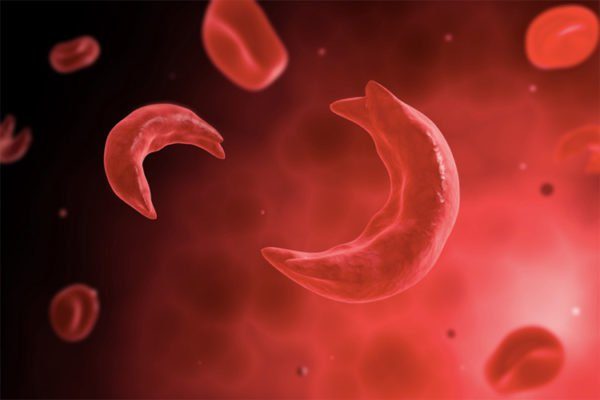Progress Toward Treating Sickle Cell Disease with CRISPR-Cas9
Our lab, in collaboration with globinopathy experts and sickle cell clinicians, have taken a key step toward a cure for sickle cell disease (SCD), using CRISPR-Cas9 genome engineering technology to reverse the disease-causing gene in stem cells from the blood of affected patients. For the first time, the genetic modification occurs in a sufficient proportion of stem cells to produce a substantial benefit in sickle cell patients. SCD primarily afflicts those of African descent and leads to anemia, painful blood blockages, and early death.
In collaboration with the UCSF Benioff Children’s Hospital Oakland Research Institute (CHORI) and the University of Utah School of Medicine, we showed that edited cells persist when transplanted into mice, an important factor in developing a lasting therapy. We’re aiming to improve the efficiency of their approach and perform large-scale studies in mice before attempting it in humans. Our lab hopes to work with Dr. Mark Walters, MD, an expert in curative treatments for sickle cell disease (such as bone marrow transplant and gene therapy), to design and initiate an early-phase clinical trial to test this new treatment within the next five years. Eventually, we hope to re-infuse patients with edited stem cells in order to alleviate symptoms of sickle cell disease.
Selection-Free Genome Editing of the Sickle Cell Mutation in Human Adult Hematopoietic Stem/Progenitor Cells
Science Translational Medicine | Mark A. DeWitt, et al | October 12, 2016
Sickle hemoglobin polymerizes under low oxygen tensions in the tissues and the red blood cell deforms, which leads to obstruction in the capillaries and painful episodes for the patients
Photo Credit: Frans Kuypers, PhD. RBClab.com, UCSF Benioff Children’s Hospital Oakland
Press Coverage
CRISPR deployed to combat sickle-cell anaemia: Studies in mice highlight the promises — and challenges — of CRISPR–Cas9 gene editing
Nature | Heidi Ledford | October 12, 2016
3 Gene Editing Approaches for Sickle Cell Disease
PLoS Blogs | Ricki Lewis | October 13, 2016
CRISPR edits sickle cell mutation: Edited blood stem cells could someday help patients produce healthy red blood cells
Chemical and Engineering News | Ryan Cross | October 12, 2016
A new gene-editing technique could help treat sickle cell anemia: Scientists hope to have a clinical trial in the next five years
The Verge | Angela Chen | October 12, 2016




